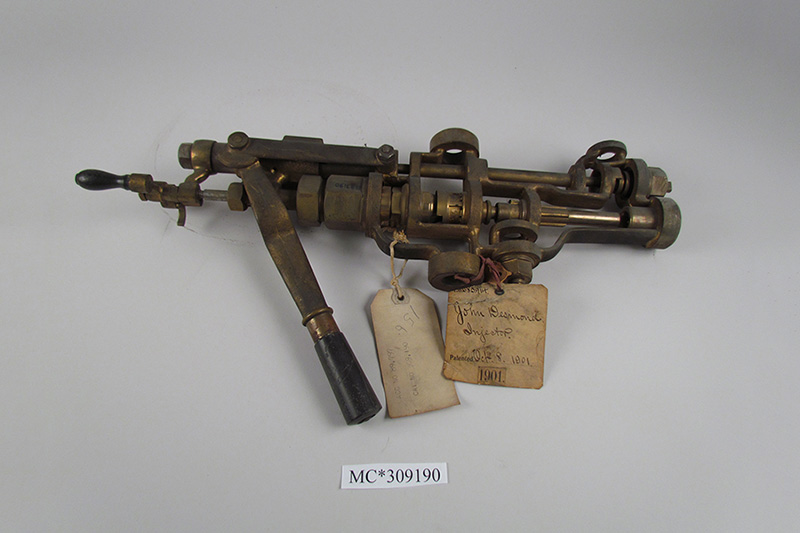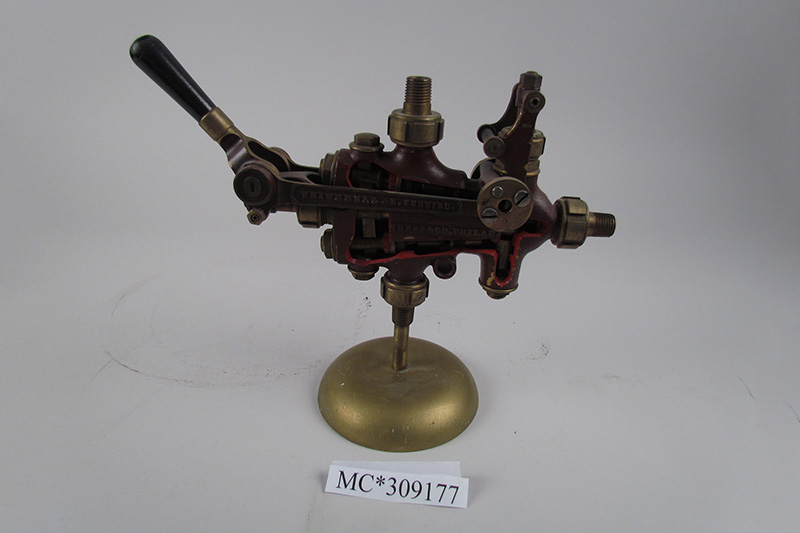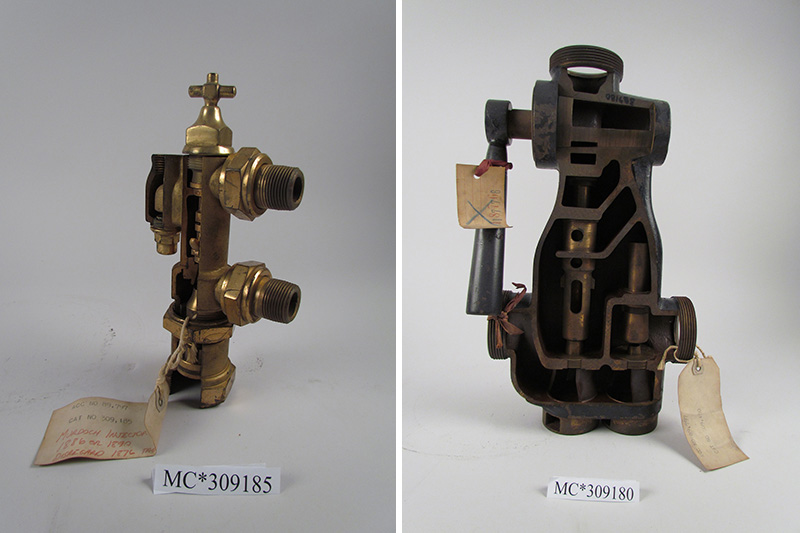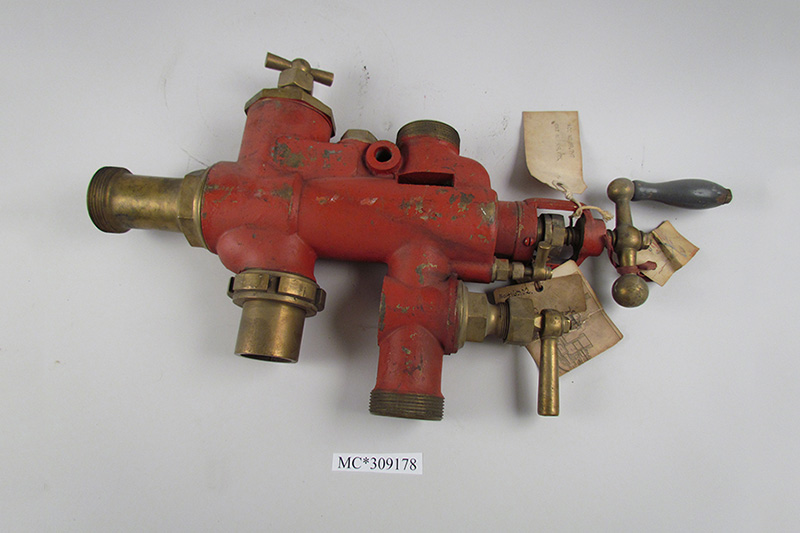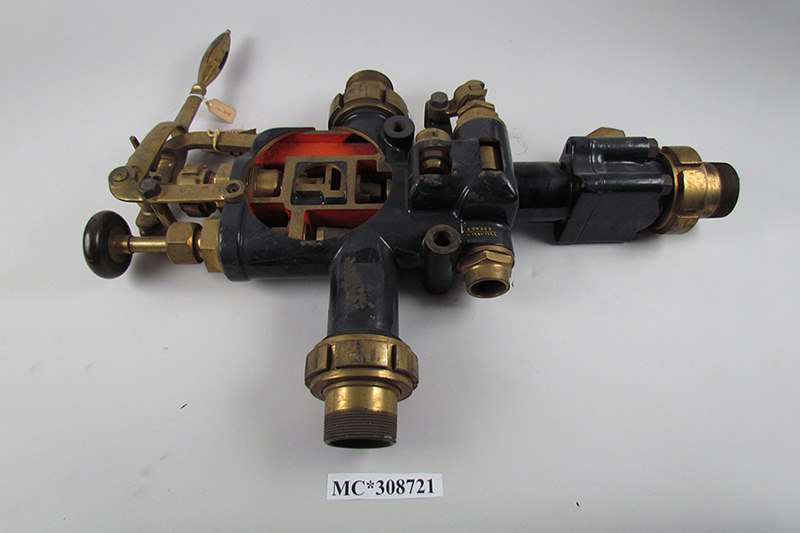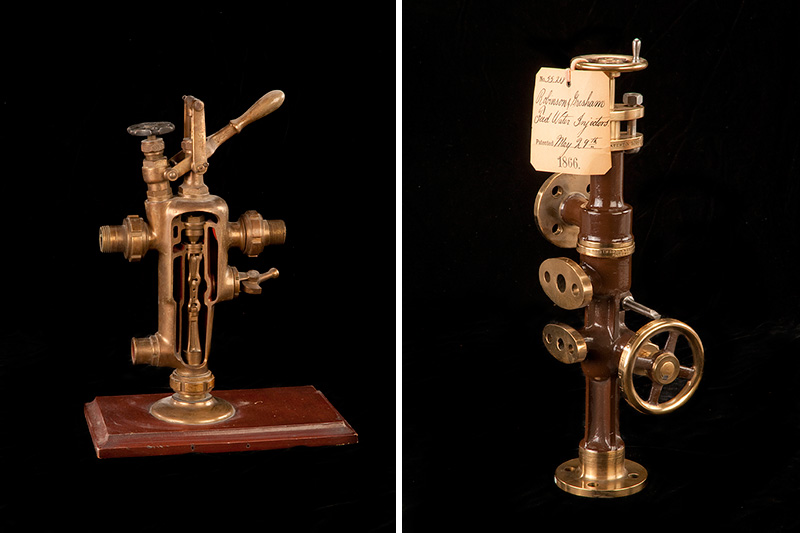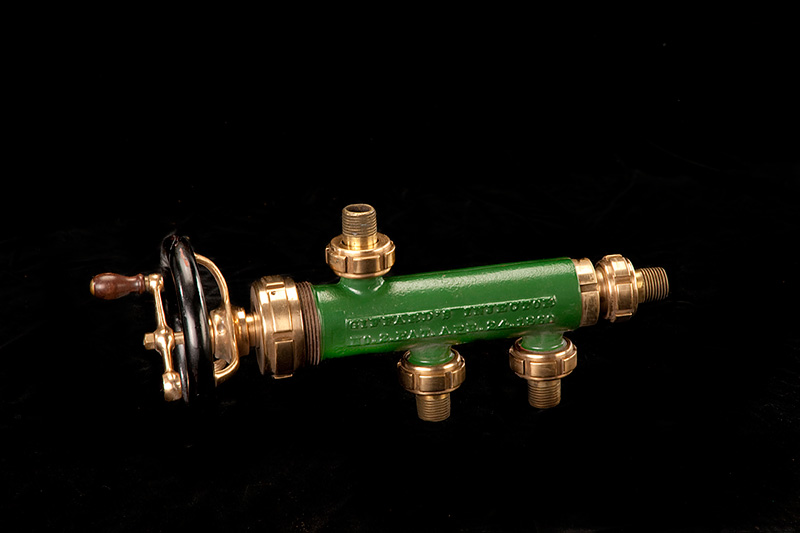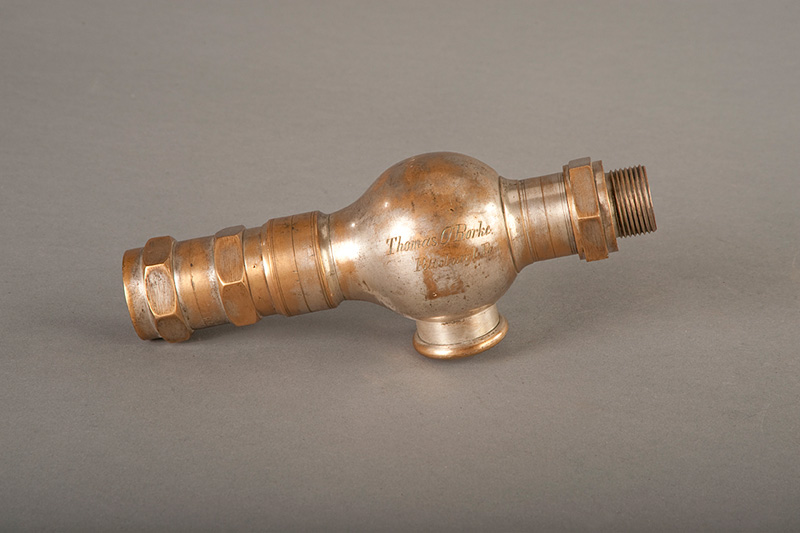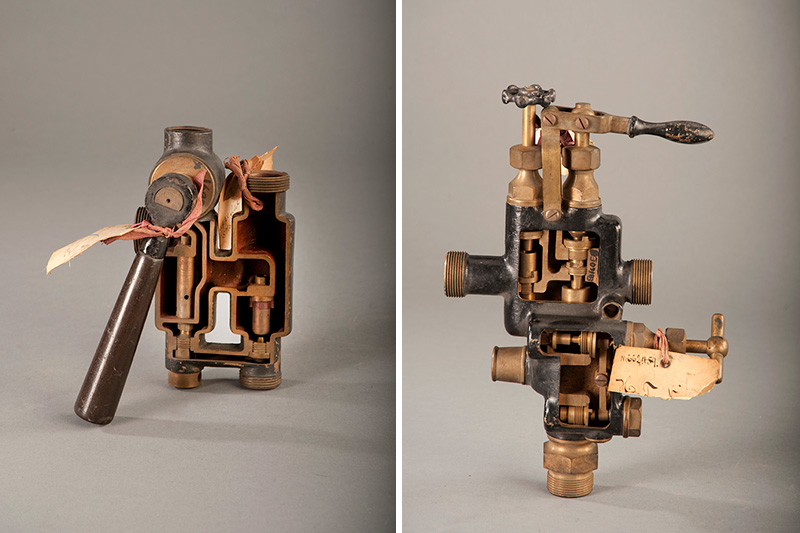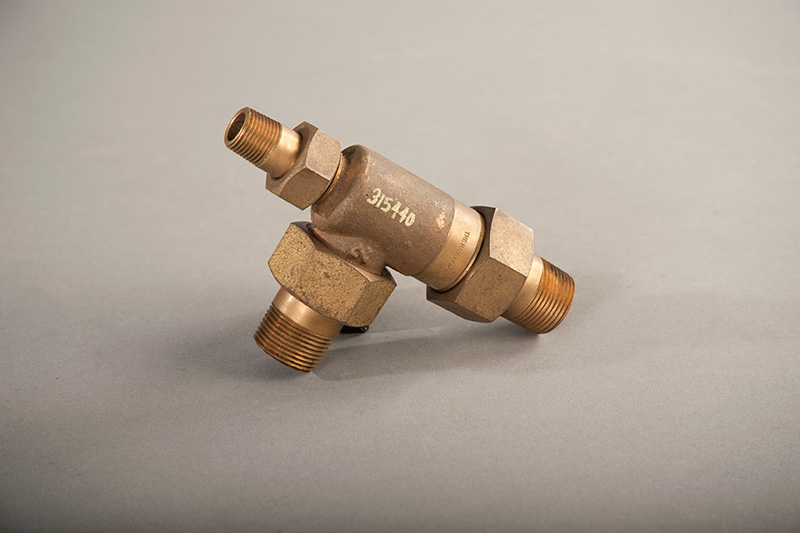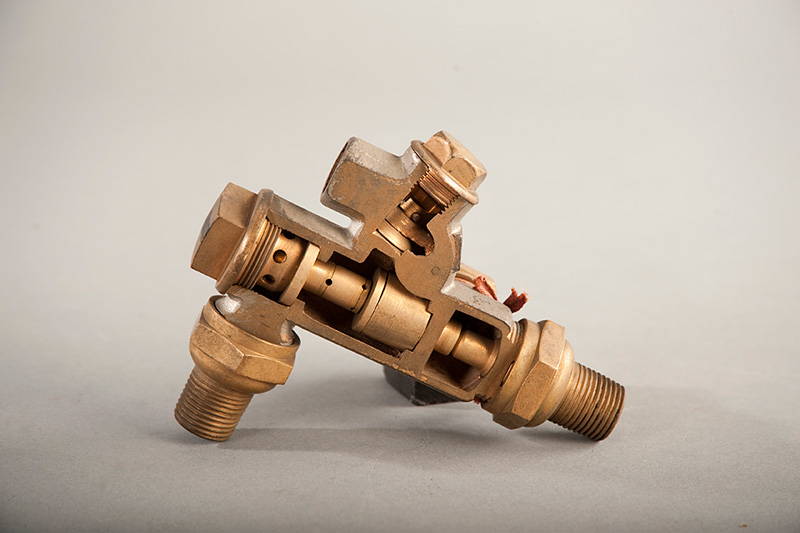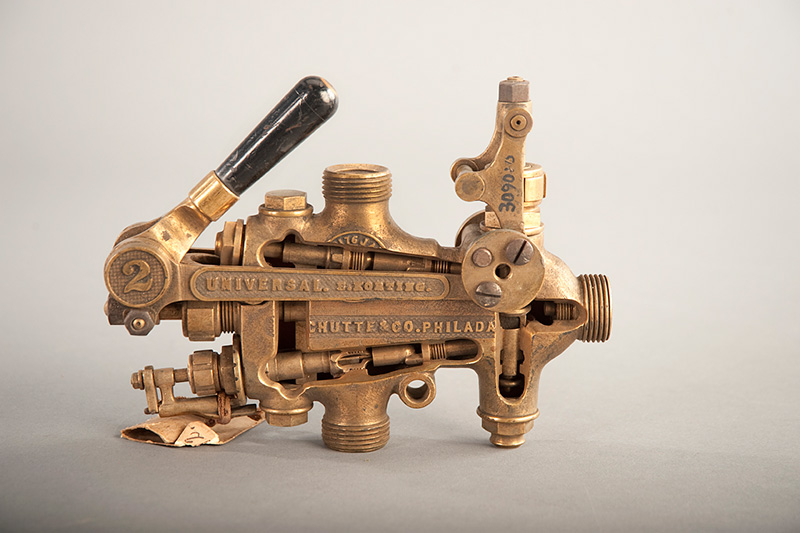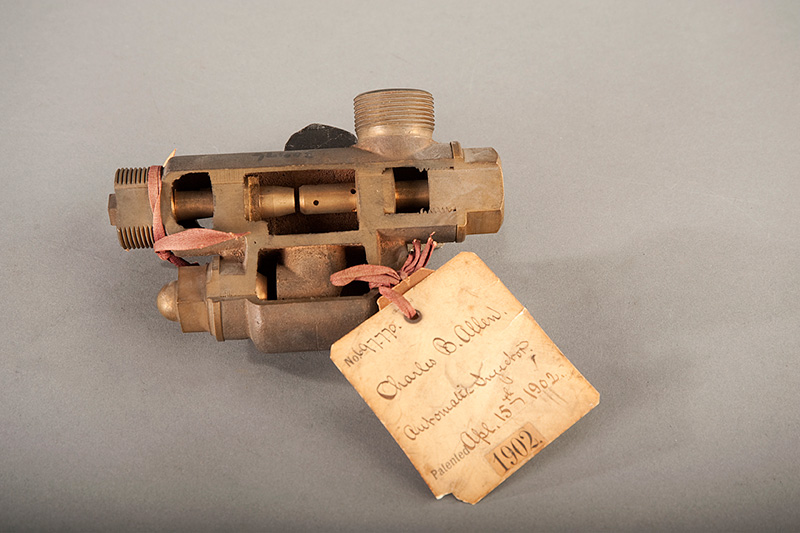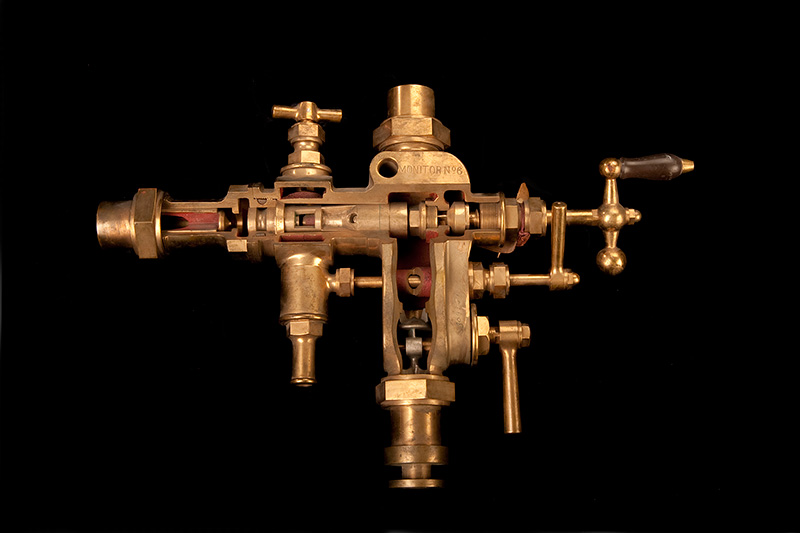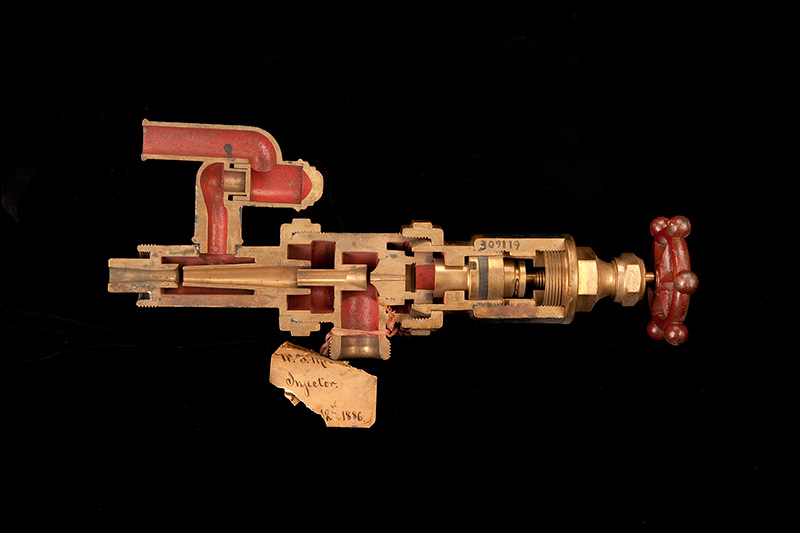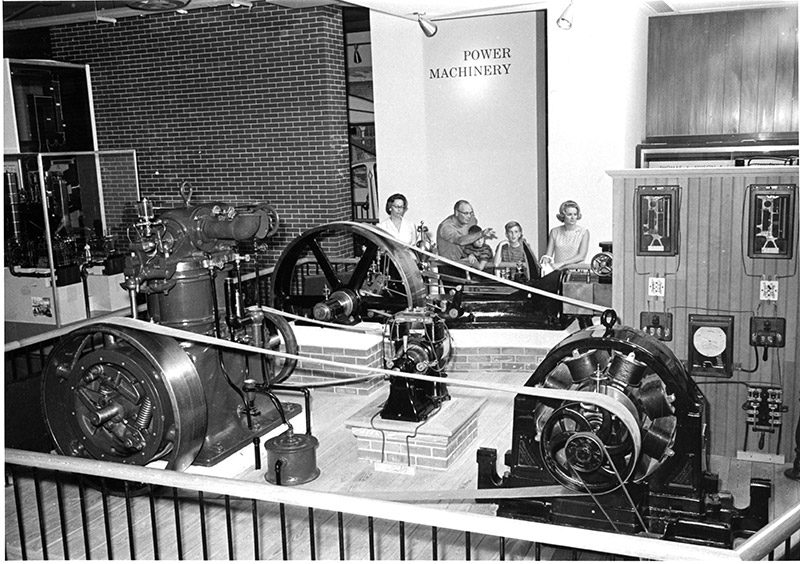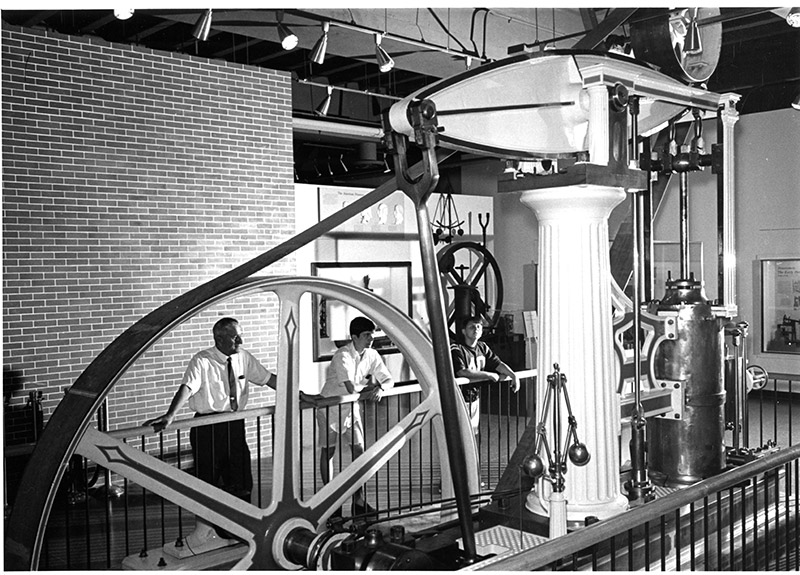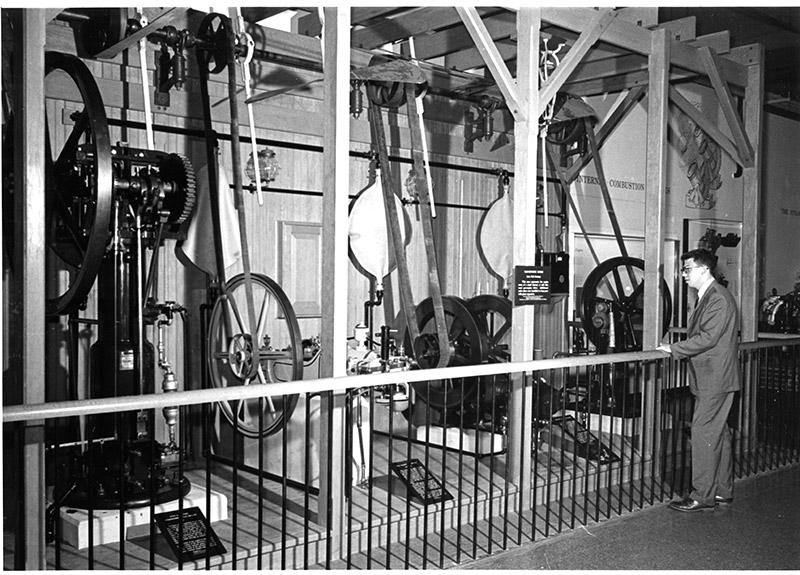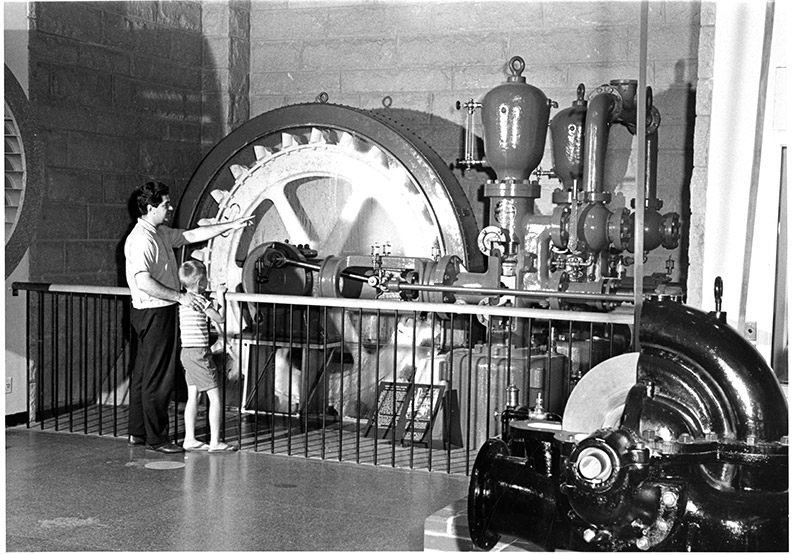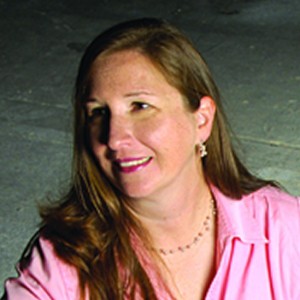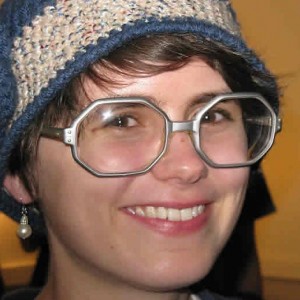Collective Forgetting
Inside the Smithsonian’s Curatorial Crisis
Deconstruct this collaborative essay to illustrate how narrative is written in scenes using literary techniques like dialogue, description, and the personal voice of the writers, to connect and communicate more effectively with readers. Click here to learn more about The Yellow Test
Chapter 1
As the hands on my watch hit 11 o’clock, I was still fighting with the stubborn dust clinging to my chocolate-colored pants. The dust was winning. I knew it was unlikely the senator would actually show up for the tour, but I wanted to look presentable, just in case: for months, I had been writing my speech in my head. Now, maybe I would get to say some of it out loud to someone who might be in a position to help.
Standing in the doorway of the reference room of the Division of Work and Industry, beyond the reach of the general public, on the top floor of the National Museum of American History in Washington, D.C., I mentally rehearsed my pitch. As my watch clicked past 11:05, my welcoming smile started to fade. By 11:10, it was gone completely. Noticing my mounting frustration at the missed opportunity, Ailyn, a Smithsonian behind-the-scenes volunteer, looked up from her paperwork, stretched, and ran a hand through her cinnamon hair. She flashed me a sympathetic look. “I hate VIPs,” she said with her crisp Cuban accent. “They never show up on time.”
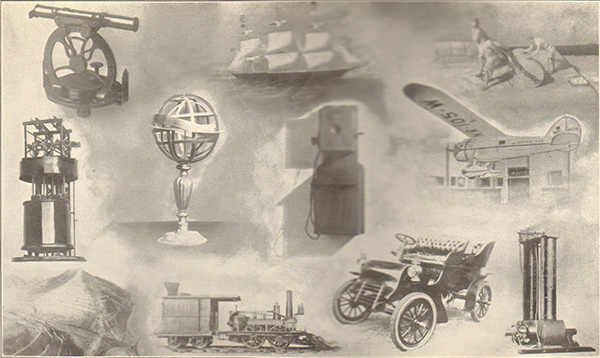
Scope of the Collections
Five minutes later, I finally heard high heels clicking down the linoleum hallway. I plastered my smile back into place as the museum director’s assistant ushered our guests through the door. I tried to hide my disappointment when I realized that Martin Heinrich, the junior senator from New Mexico and the VIP I had been waiting for, would not be joining us after all. In a whirlwind of handshakes, I tried to catch names and identifying reference points. I already knew that the gentleman was an architect who had the ear of the museum’s director, but who were the two older women? I didn’t know and would never find out, but they seemed curious and eager nonetheless, so I started my tour.
In preparation for the VIPs’ visit, I’d removed some of my favorite objects from their crowded storage cases in the locked area adjacent to the more welcoming and slightly less cluttered reference room. I’d carefully arranged the artifacts on two government-issued 1960s green metal tables for inspection, but before I could don my purple nitrile gloves and make my introductions, the architect made a beeline for a set of blueprints in a soft leather binding. He smiled as he recognized the Empire State Building. Floor by floor, the names of the business tenants—some of them still familiar, but many more long forgotten—revealed themselves as he flipped through the pages. I had playfully left the book open to the forty-ninth floor, where the Allison Manufacturing Company had occupied the northeast corner of the building. Maybe it would help him remember my name.
“Do you know who did these drawings?” he asked me.
“Morris Jacks, a consulting engineer,” I offered. “He made them in 1968 as part of a tax assessment. He calculated the building’s steel to have a lifetime of sixty years.”
All three visitors quickly turned to me with worried looks. The Empire State Building was built in the 1930s. Was it going to collapse?
“Don’t worry. The steel itself is fine!” I assured them. “The Empire State Building isn’t going to fall down. Jacks was actually estimating the building’s social lifespan. He thought that after sixty years, New York City would need to replace it with something more useful.” As the visitors laughed in disbelief, I sensed an opening to start my pitch, to make the argument I’d been waiting six months to make. “Engineering drives change in America, and history can show the social implications of those technological choices. Museums have the power to—”
“Wait. What’s this?” One of the women was pointing to a patent model occupying the center of the table. She bent down to get a closer look at the three brass fans mounted in a row on a block of rich brown mahogany. They were miniature windmills, only six inches tall. Their blades were so chunky that it was hard to see the spaces where the wind would have threaded through them—a far cry from the sleek, razor-thin arms whipping around by the hundreds on today’s wind farms. But follow the wires jutting out of their backs, and you could see what made this patent model special: a battery pack. Inventor and entrepreneur Moses G. Farmer was proposing a method to store power generated by the wind. If the model were full-sized, that battery could power your house.
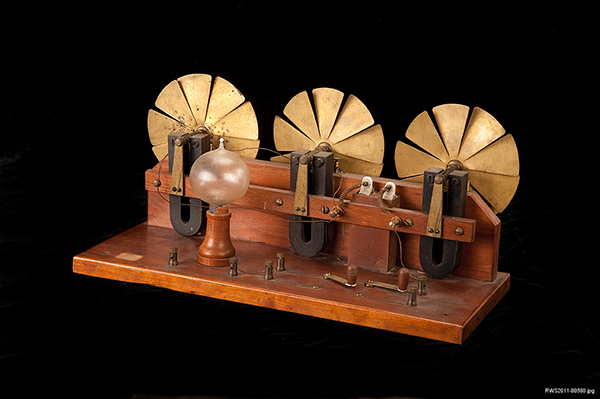
Windmill Patent Model (Back)
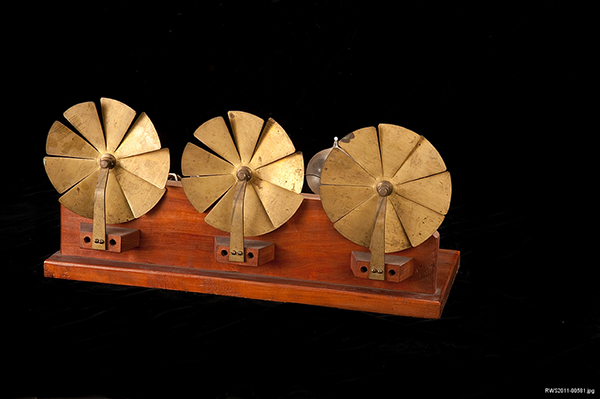
Windmill Patent Model (Front)
“It’s a way to keep the lights on even when the wind isn’t blowing,” I explained, hoping she might be in a position to report back to Senator Heinrich, who I knew served on the Senate Committee on Energy and Natural Resources. As the only engineer in the Senate, he would understand the technical difficulties of an intermittent power supply—a major hurdle in the clean energy industry. When I told the woman that Farmer was the first person to submit a patent application trying to solve the problem—in 1880—her jaw dropped.
One of the guests spotted our intern, Addie, quietly working at another desk tucked in a corner of the reference room, having been temporarily displaced by the impromptu tour. The group gathered around her cramped desk, marveling at her minute penmanship as she diligently numbered the delicate edges of mid-twentieth-century teacups arranged in neat rows on white foam board. No one had difficulty imagining well-dressed ladies sipping from them aboard a Cunard Line cruise across the Atlantic.
In our remaining time, my tour group barely let me get a word in edgewise—a few details about any object started them chattering excitedly to each other. Before I could lead the party into the back storerooms, where the real treasures were kept, the museum director himself arrived, commandeered the group, and swept them out the door with a practiced authority and a mandate to keep them on schedule. My half-hour tour of NMAH’s mechanical and civil engineering collection had been slashed to fifteen minutes. Their voices drifted as they walked down the hall. “What an amazingly intelligent staff you have,” one of the guests remarked.
The compliment was bittersweet, at best. None of us was actually on staff at NMAH. Ailyn was a volunteer who gave her time in retirement to help the Division of Work and Industry keep its records in order. Addie had only two more weeks left in her unpaid internship; she had recently graduated with an undergraduate history degree and was looking for a permanent job. I was a research fellow on a temporary leave from my faculty position in the history department at the University of South Carolina, a job to which I’d be returning in another month. That was what I had been dying to tell them: the NMAH engineering collection doesn’t have a curator, and it won’t be able to get one without help from powerful supporters, like a senator who could speak up for engineers. My guests had been so engaged with what they were seeing that I didn’t even have a chance to tell them that they were catching a rare glimpse into a collection at risk.
Chapter 2
Since its founding in 1846, the Smithsonian Institution has served as the United States’ premier showplace of wonder. Each year, more than 30 million visitors pass through its twenty-nine outposts, delighting at Dorothy’s ruby slippers, marveling at the lunar command module, and paying their respects to the original star-spangled banner. Another 140 million people visited the Smithsonian on the Web last year alone (and not just for the National Zoo’s panda cam). Collectively, the Smithsonian preserves more than 137 million objects, specimens, and pieces of art. It’s the largest museum and research complex in the world.
But behind the brilliant display cases, the infrastructure is starting to crack.
But behind the brilliant display cases, the infrastructure is starting to crack. The kind of harm being done to the Smithsonian’s collections is not the quick devastation of a natural disaster, nor the malicious injury of intentional abandonment. Rather, it’s a gradual decay resulting from decades of incremental decisions by directors, curators, and collections managers, each almost imperceptibly compounding the last. Over time, shifting priorities, stretched budgets, and debates about the purpose of the museum have resulted in fewer curators and neglected collections.
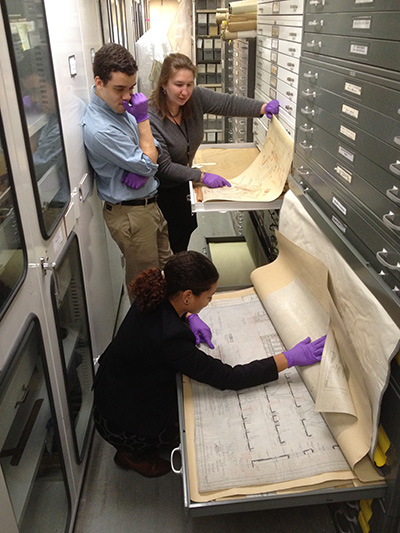
The author works in the National Museum of American History.
In 1992, NMAH employed forty-six curators. Twenty years later, it has only twenty-one. Frustrated, overworked, and tasked with the management of objects that fall far beyond their areas of considerable expertise, the remaining curators can keep their heads above water only by ignoring the collections they don’t know much about. These collections become orphans, pushed deeper into back rooms and storage spaces. Cut off from public view and neglected by the otherwise occupied staff, these orphaned collections go into a state of suspended animation, frozen in time the day they were forgotten. With no one to advocate for them, their institutional voices fade away.
Engineering is just one of these collections. Formally established in 1931, the collection predates the 1964 founding of the National Museum of History and Technology (the precursor to today’s NMAH). But today, its objects are routinely overlooked when the remaining curators plan exhibits. If you wanted to tour the collection, you’d have to be a senator-level VIP or have friends on the inside. Even established scholars have trouble making research-related appointments. There’s simply no one available to escort them into the collections. What’s more, no one is actively adding to the collection, leaving vast swaths of the late twentieth and early twenty-first centuries—inarguably, an essential time for engineering and technology—unrepresented in the United States’ foremost museum of history.
It is difficult to trace the curatorial crisis back to a single origin. The Smithsonian’s budget is labyrinthine: federal money funds much of the institution’s infrastructure and permanent staff positions, while private donations finance new exhibitions and special projects. A central fund is spread across the museums for pan-institutional initiatives, but each individual museum also has its own fundraising goals. As with any cultural institution, federal support fluctuates according to the political whim of Congress, and charitable donations are dependent on the overall health of the nation’s economy, the interests of wealthy donors, and the public relations goals of (and tax incentives for) corporations. Museum directors have to juggle different and sometimes conflicting priorities—including long-term care of the collections, public outreach, new research, and new exhibits—each fighting for a piece of a shrinking budgetary pie. In fiscal year 2013 alone, sequestration cut $42 million, or 5 percent, of the Smithsonian’s federal funding, forcing the institution to make painful choices. Without money, the Smithsonian can’t hire people. Without people, the Smithsonian can’t do its job.
For my part, I was one of about a dozen temporary fellows brought in to NMAH last year thanks to funding from Goldman Sachs. Spread out across the museum’s many departments, we were supposed to help “broaden and diversify the museum’s perspective and extend its capabilities far beyond those of its current resources.” For six months, I would take on the work of a full-time curator and try, however briefly, to stem the tide of collective forgetting.
Chapter 3
When I arrived at NMAH in January of 2013, I felt as if I were reuniting with old friends. I had spent significant time in the engineering collection as a graduate student while researching my dissertation on the history of factory tours. Now, many years later, I spend much of my time in the classroom, lecturing to uninterested undergrads on the history of technology or pushing graduate students to think more broadly about the purpose of museums. I was looking forward to the chance to get my hands dirty, inspecting artifacts and doing real museum work.
I had underestimated the actual level of dirt. Despite the collections manager’s best efforts, construction dust from a building improvement project had seeped through the protective barriers and coated archival boxes filled with reference materials. As I pulled items off the shelves, puffs of it wafted up to my nose. My eyes watered and my nose itched as I wiped away the new dust that had silently settled upon the old. The strata of grime made the exercise nearly archaeological. My allergist would have been horrified.
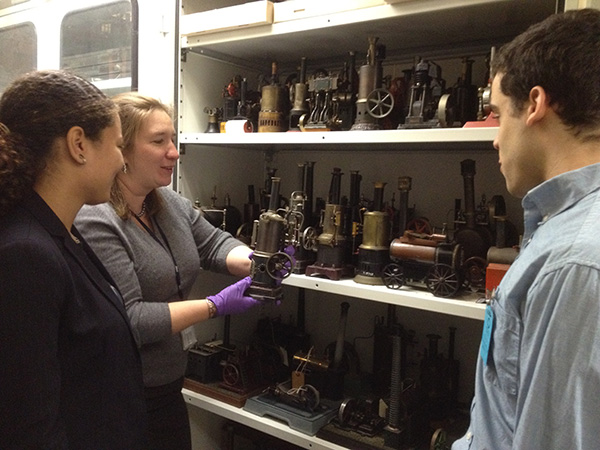
The author working with Smithsonian volunteers.
On red letter days, I rediscovered national treasures that had spent years buried under the dust: the Empire State Building blueprints, for example, or the original plans for Grand Central Terminal. But I spent most days sifting through an onslaught of the mundane—the national rebar collection, engine indicators, or twenty years’ worth of one engineer’s daily planners. I began to better appreciate why no one had been eager to take on the task of sorting through all these shelves full of obsolete ideas. One typical spring morning, I slid open the glass doors of a storage case and pulled out sixteen patent models of boiler valves.
Trying to understand why, exactly, the museum had gone to the trouble of collecting so many boiler valves, I thumbed through Bulletin 173 of the United States National Museum, a catalog of the mechanical collections compiled back in 1939 to document the work done by the Division of Engineering’s founding curators. It appeared they were trying to document the progress in standardizing safety laws. The nineteenth century was the Age of Steam, giving rise to the locomotives and factories of the Industrial Revolution. Steam boilers generated a tremendous amount of power, but they were also notoriously treacherous. Frequent explosions often killed workers, but no legal codes existed to regulate construction and operation of pressure vessels until 1915, over one hundred years after they came into widespread use. In the rows upon rows of boiler valves on the shelves in front of me, I began to glimpse years of work by countless engineers desperately trying—with varying degrees of success—to devise a technological fix to a serious problem.
Curators are custodians of the past, but they must also collect the present in anticipation of the future.
Curators are custodians of the past, but they must also collect the present in anticipation of the future. They grab hold of ideas, like the increasing importance of workplace safety at the tail end of the Industrial Revolution, and attempt to illustrate them with physical objects, like the boiler valves. Curators can’t always predict which new technologies or interests will guide future research, but they can nevertheless preserve the potential of latent information and make it available to its future interpreters. Long after such artifacts have been rendered obsolete in the world outside the museum, the curators at NMAH hold them in trust for the American public.
I lined up all of the boiler valves in a row on a table in the reference room. At one point, they had told a story—a story those founding curators had hoped to share with audiences reaching far into the future—and my job now was to make sure that story could be rescued and retold by the curators and visitors who I hoped would come after me. With minimal written information about the valves’ importance and provenance, I sat down to do what I was trained to do: read the objects.
Some looked like water faucets; others like Rube Goldberg contraptions. I picked up a bronze model that, with its cylindrical air chamber and protruding nozzles, vaguely resembled a toy water gun. The 1939 catalog indicated that this valve was patented in 1858 by a man named Frick. He had designed it to be an all-in-one machine, combining a valve with nozzles to relieve dangerous levels of pressure inside the boiler, an alarm to warn of any failure to do so, and water jets to extinguish the resulting fires. I updated the database with this information, wondering what type of inventor Frick was. I wondered if he felt the weight of his failure every time he read about another deadly boiler explosion in the newspaper. Maybe he smiled and patted himself on the back each day he didn’t. Finally, I clicked save and pushed the entry into the queue for legal review so that it could be put in the Smithsonian’s online collection database. Then I moved onto the next mute artifact waiting for me to give it a voice.
Hours later, I stepped back from my notes. I now had object-level descriptions for each one of the models. Thanks to an inventory team working under temporary contracts, they all had been recently photographed as well. With a photo and a description, the valves could be put online, their digital records available to anyone with an Internet connection. Still, online patrons won’t be able to feel the weight of these artifacts in their hands, nor will they be viscerally overwhelmed by their numbers, as I was. They will have no physical sense of the abundance of artifacts, the piles of stuff that tell the stories of countless engineers working together and on their own to solve the problems of their times.
I sighed, collected my notes, and put the valves back in storage.
Chapter 4
Future visitors to the engineering collection will learn about coal mining in the nineteenth century, but there will be no objects helping them understand hydraulic fracking in the twenty-first.
How will future historians—or even just curious museum visitors—see our current technological moment represented at NMAH? If the Smithsonian’s resource crunch continues down its current path, chances are they won’t see it at all. Without a curator, a collection cannot grow and evolve. Future visitors to the engineering collection will learn about coal mining in the nineteenth century, but there will be no objects helping them understand hydraulic fracking in the twenty-first. Researchers will be able to examine building plans of every station, bridge, and tunnel on every route once covered by the Pennsylvania Railroad, but they won’t see an example of a cable-stayed bridge, a design that has dominated in recent decades. They will be able to see designs for the 1885 Milwaukee municipal water supply system, but they won’t see the much more recent inventions that keep our drinking water safe today.
What’s more, NMAH is fast approaching a generational cliff. Sixty-eight percent of the staff is eligible to retire today, but the younger guard feels like the Baby Boomers will never leave. Some Boomers haven’t been able to save enough to retire, but many more are simply dedicated to the job and are unwilling to see their lives’ work be mothballed. They can’t imagine leaving without passing the torch to a replacement—replacements they know the museum can’t afford to hire. But the alternative isn’t any better; eventually, these aging curators will die without anyone to take their places. Their collections will join the dozens of orphans the Smithsonian already struggles to care for.
The new director and deputy director of NMAH understand the challenges they have inherited and are working toward stemming the tide. Their 2013 strategic plan lists “revitalizing and increasing the staff” as one of the four main priorities for the museum. Doubting that any more public funds will be forthcoming in the near future, NMAH—reflecting a trend at the Smithsonian more generally—is staking its future on private fortunes, courting billionaires to endow curatorial positions tied to blockbuster future exhibits. That leads to a backward hiring process, in which new curators are hired only after the exhibits they are tasked with planning are underway. And because already curator-less collections, like engineering, do not currently have the institutional voice required to push for and plan the kind of blockbuster exhibits that attract these endowed positions, they are left out of both exhibit halls and development plans. They are orphaned twice over.
Almost daily during my six months at NMAH, I was pulled into informal conversations about the future of the museum. Over lunch or in the hallway, I talked with curators and collections managers about where we might get a grant to extend the contracts of the inventory team. Sometimes we dreamed bigger, wishing for a new floor plan for the storage areas. Imagine if we could knock down the walls and open up the rooms, put in moveable shelving, and reunite collections that had been dispersed across the museum!
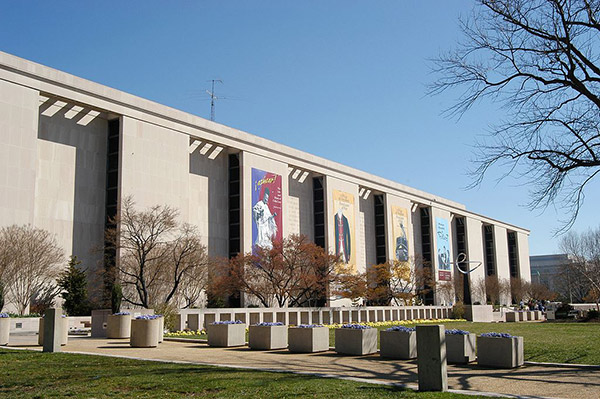
The National Museum of American History Building.
On days of extraordinary frustration—when everyone just felt overworked, underpaid, and overwhelmed by the challenges the museum faces—we all secretly harbored a desire to leak insider stories to The Washington Post or the General Accounting Office. But we almost always held back. Everyone who works for the Smithsonian loves the ideals the institution aspires to. They fundamentally believe in the founding mission: “For the increase and diffusion of knowledge.” We want to be able to have frank discussions about the needs of the museum, but we worry that if we speak too loudly, we might unjustly diminish its institutional authority. Even with its faults, the Smithsonian remains a seriously amazing place. But without public advocacy—which depends on public awareness—the Smithsonian’s curatorial crisis has no hope of being solved.
In March of 2013, about halfway into my Smithsonian residency, I gave a deliberately provocative presentation at the weekly colloquium where curators and visiting researchers give talks based on their current work. Although the colloquia are open to the public and occasionally attract graduate students and professors from local universities, they are mostly insider affairs. I titled my talk “Because Engineers Rule the World” and had NMAH’s social media coordinator live-tweet it to the museum’s thousands of Twitter followers. I showcased some of my favorite objects, gave a brief history of the engineering collection, and then outlined some suggestions for what its curatorial future might look like. It’s not hard to imagine two diverging possibilities. Down one dark path, the engineering collection becomes so neglected that it cannot be resurrected. No one knows how the collected technologies once worked or why future generations should study them. The objects become pieces of Steampunk art, beautiful, perhaps, but irrelevant to working engineers. A brighter future, on the other hand, might feature additional curatorial staff, perhaps funded by engineering professional societies or major companies. I had already tried to tip the scales in favor of engineering by offering NMAH’s development officer a list of Global 100 companies, highlighting objects of theirs that we had in the collection. We were preserving their history. The least they could do, it seemed, was help us pay for it.
Robert Vogel, one of the last curators of engineering, now retired, sat staunchly in the audience listening to my talk. During the Q&A, he reminisced about the glorious engineering exhibits of the past, and I realized almost all of them had been dismantled and shipped to off-site storage over the past two decades. The last remaining public homage to engineering, the Hall of Power Machinery, sits forlornly in a dimly lit, uninviting back corner of the first floor’s east wing. For the intrepid visitors who wander into the space, the objects give a glimpse into the technological history of the Industrial Revolution. But since the exhibit cases are so old that they do not meet current safety standards, they cannot even be opened to change the long burnt out light bulbs.
The week after my colloquium talk, I participated in the Smithsonian’s (somewhat) annual April Fool’s Day Conference on Stuff. This year’s theme was “grease”; it seemed only fitting that the engineering collection, which is filled with big greasy things, should be represented. I gave a tongue-in-cheek presentation on the history of gun control—grease guns, that is. In a seven-minute romp through the collections, I talked about jars of grease, bottles of grease, cans of grease, cups of grease, tubes of grease, and even two pots of grease that have been missing since the Congressionally mandated inventory of 1979 (they were in the vintage database, but I never could track them down). From the grease gun that came with the 1903 Winton convertible to the WWII-era M3 submachine gun, which earned the affectionate nickname “the greaser,” I drew attention to objects that had not been out of storage in decades.
Taken together, these two public talks created a momentum that knocked me out of my host department and propelled me into conversations with curators in art, medicine, education, programming, and others. My colleagues laughed at the April Fool’s Day lecture but were also astonished by the objects I’d uncovered and the latent connections that were just waiting to be made across the museum. I’d made my point: they could see what was being missed without a curator, what stories weren’t being told. More important, perhaps, my public acknowledgment that the engineering collections were orphaned unleashed a flood of response from museum staff. A curator in the Division of Medicine and Science stopped me in the hall to tell me, “Ten years without a curator? That’s nothing. We have collections that haven’t been curated in decades.”
Chapter 5
With only a few weeks left in my fellowship, I decided I had to make a move. I drafted a two-line email, agonizing over every single word. Finally, I took a deep breath and hit send. Instant second-guessing. The Smithsonian is an institution with a deep hierarchical arrangement of authority, and I had just pole vaulted over four levels of supervisors, directors, and undersecretaries to email Dr. Wayne Clough.
Clough, a civil engineer by training, was president of Georgia Tech before accepting his appointment as the twelfth-ever Secretary of the Smithsonian. If I was going to make a case on behalf of the engineering collection, I figured now was the time. I invited him for a tour; somewhat to my surprise, he happily accepted. We emailed back and forth about possible dates before Grace, his scheduler, stepped in with a definitive time. May 30, 3 p.m.
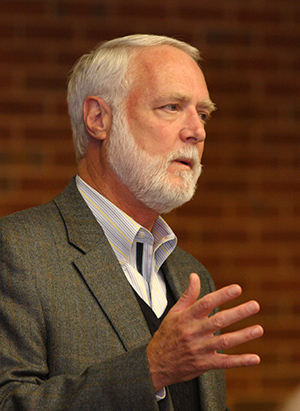
Dr. Wayne Clough, former Secretary of the Smithsonian
My gamble had paid off, so I decided to roll the dice again and emailed Senator Heinrich. Jackpot! Catherine, the Senator’s scheduler, said he would love to stop by, barring any committee calls for votes.
I had about two minutes to daydream about the perfect meeting—three engineers getting together to talk shop. I imagined a conversation about how our engineering backgrounds prepared us for our current jobs, which were not technical at all. I thought we could talk about who today’s engineering rock stars are—people, companies, and ideas that NMAH should be collecting. We could discuss STEM education initiatives and how a national engineering collection could be featured within a history museum.
Then a flood of emails rushing into my inbox knocked me back to political reality. First came a message from the Smithsonian’s Office of Government Relations, then an email from the administrative assistant for the Director of Curatorial Affairs, then another from the scheduler for NMAH’s director—all grabbing for control over my tour. My frank conversation with fellow engineers was turning into a three-ring circus of administrators. But when I complained to a curatorial friend from one of the off-the-Mall Smithsonian museums, she shot back, “Are you kidding? These government relations people are exactly the ones you need to be talking to!” After all, she explained, they don’t get to spend just fifteen minutes with a single senator—they get to highlight institution-wide issues in reports that are read by all of Congress. “Now that you’ve got their attention,” my friend said, “you need to let them know engineering is being forgotten. Then maybe they can get the gears working to hire a curator.”
A week before the scheduled tour, I opened my inbox to heartbreak. “Dr. Clough will now be out of town next week,” Grace wrote. “Could we reschedule for June 6?”
For me, June 6 was too late. By then, my fellowship would be over. I’d have resumed my regular life as a professor, teaching a six-week summer course on comparative public history in England. In fact, the whole storeroom would be devoid of people. The contract for the collections inventory team had not been renewed, so no one would be able to finish imaging the objects and creating database entries. The engineering collections would return to hibernation.
But I wasn’t willing to let it go quite yet. I managed to arrange a meeting for late July, when I would be returning to D.C. for just a few days. I was determined to make one last plea for the collections.
Chapter 6
When my plane landed at Dulles late on the Saturday night before the rescheduled tour, I turned on my phone and checked my voicemail for the first time in six weeks. I found numerous messages from my Smithsonian supervisor, left in increasing levels of panic. “You’d better come in a day early to set things up,” he sighed when I finally got a hold of him the next day.
So that Wednesday, still a bit jet-lagged, I boarded the Metro and made the familiar trip to NMAH. I had been gone for less than two months, but my I.D. card had already expired, so my supervisor had to meet me in the lobby and escort me up the elevator to the staff-only floors. “Better watch out,” he warned me. “You’ve upset quite a number of people.”
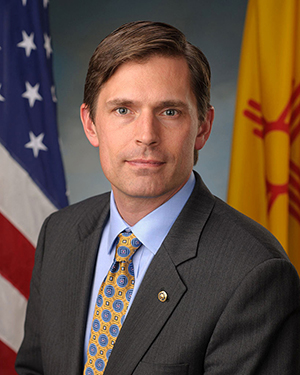
Senator Martin Heinrich
The NMAH’s top curators had already decided my tour would not take place in engineering’s shabby storeroom. Rather, our VIPs would be the first to see a newly renovated, state-of-the-art showroom down the hall. Intended to house the agriculture and mining technologies collections (and completed before the funds could be poached to keep the museum open during sequestration), the new room was icy—not because they had managed appropriate climate control (a constant challenge for all museums), but because the collections manager was downright hostile. My shenanigans had meant that she had to vacuum away every speck of dust and generally eliminate any sign that this was an active workplace.
Outside in the corridor, I overheard two staff members talking about me: “Who does she think she is? Emailing the Secretary! Inviting a senator!” The privileges I had enjoyed as a pesky but eager Smithsonian insider were long gone. Now, my former colleagues saw me as merely a graceless interloper, ignoring rules I didn’t like, calling attention to workers who preferred to keep their heads down (and off the chopping block), and creating extra work for them in the process.
Before the tour, the Director of Curatorial Affairs gave me strict orders: under no circumstance was I allowed to speak for the future of NMAH’s collections. I wasn’t allowed to make any suggestions about what the museum should be collecting or what its direction should be. I wasn’t allowed to say anything that might prompt a question for which the secretary didn’t have an answer. If the senator asked me what he could do to help, I was not allowed to say. If asked directly, I should defer to someone with authority to speak to those issues.
Humbled but still nervously excited, I reported to the staff entrance the next day to meet my guests. John Gray, the director of NMAH, was already there, along with the personal assistant to the museum’s director of curatorial affairs and the Smithsonian Institution’s legislative affairs liaison. I was pleased to see that Gray was beaming. “So you’re the one who made this happen?” he asked, shaking my hand. I started to apologize about overstepping, but he cut me off. “Nonsense. This is the kind of thing we need to do more often. And why aren’t we showing them our old storerooms? They need to see our challenges.”
Secretary Clough arrived right on time with his suit jacket folded over his arm, a concession to D.C.’s brutal summer heat. All of the men quickly slipped out of their own jackets in show of deference to his authority. After quick introductions, we settled into a light-hearted banter. Twenty minutes later, Senator Heinrich arrived with his assistant, apologetic for his tardiness but still enthusiastic. “Have you ever been to the National Museum of American History?” I asked. “No? Well, you’re in for a special treat.”
Objects from the Panama Canal, a piece of the levee wall that collapsed during Hurricane Katrina, microcomputers—it was an engineering treasure trove.
Sure enough, when we walked into the gleaming showroom, the senator was like a kid in a candy store. Objects from the Panama Canal, a piece of the levee wall that collapsed during Hurricane Katrina, microcomputers—it was an engineering treasure trove. Heinrich immediately started examining Farmer’s windmill-battery patent model, trying to see how it worked.
Exactly six minutes into the tour, the senator’s assistant interrupted us. “A vote has just been called. We need to leave. Now.”
As Senator Heinrich started rushing down the hall, he called out, “When can I come back with my kids?”
“Anytime!” I yelled after him, not mentioning that I wouldn’t be there to show them around.
I returned to the showroom, where the Secretary had been talking to the Director and other assembled staff members. He turned to me and asked, regarding a slightly ragged pile of papers, “Why those?”
I confessed that even though it wasn’t very flashy, it was one of my favorite objects. “In 1903, an engineer took a drafting course by correspondence school. Those are his notes. I think it offers insightful parallels to today’s debates over online education.”
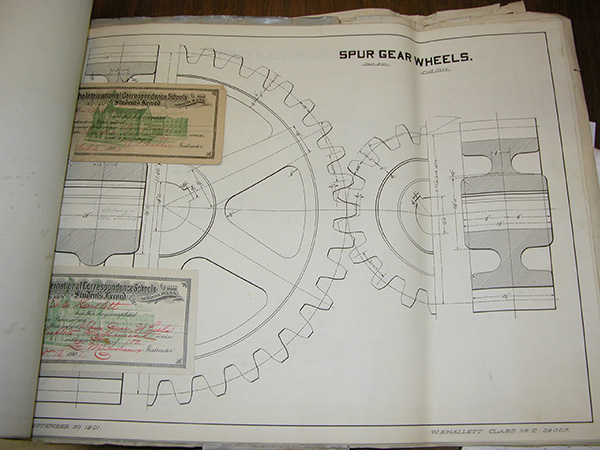
International Correpondance School Exercises
Secretary Clough flipped through the exercises, reminiscing about his own drafting coursework. Like the student from the past, he was always being reprimanded for his imprecise handwriting and varyingly thick lines. When he leaned forward to take a closer look at the school’s name, a smile slowly spread across his face. “International Correspondence School. ICS. That’s how my dad got his degree. He worked on banana boats out of New Orleans. Back and forth to South America, he decided to earn a certificate in refrigeration and marine engine maintenance.”
He stepped back and looked directly at me. “What can I do to help engineering?”
I smiled, biting my tongue. “You need to talk to the director of curatorial affairs about that, sir.”
Chapter 7
Barely a week after the tour, Gray forwarded an email from Clough to NMAH’s entire staff. In response to upheaval in the federal budget negotiations, the secretary instituted a hiring freeze across all of the Smithsonian’s museums. It was scheduled to last for ninety days, but everyone knew it would likely drag on much longer. In September, Clough announced he would retire in the fall of 2014, meaning the curatorial crisis will have to be handled by the next Secretary.
By chance, I had the opportunity to talk to Secretary Clough again. While attending a workshop sponsored by the Museum Trustee Association last fall, I slipped out of a less-than-stimulating session on institutional endowments. As I wandered through the halls of Dumbarton House, an eighteenth-century house in the heart of Georgetown, I spotted Clough, who was scheduled to give the lunchtime keynote address. He had recently announced his resignation from the Smithsonian, so I asked him what the recruiting firm was looking for in his replacement. He smiled and said nonchalantly, “You know, the usual. Someone who walks on water.”
Clearly, there is no returning to a mythic Golden Age when Congress could supply adequate funding for the Smithsonian’s needs.
It was October 4, 2013, and Clough began his address to the group by noting that the Smithsonian is usually open 364 days a year. The government shutdown had already closed the museum for four days, which ultimately stretched to over two weeks. Clearly, there is no returning to a mythic Golden Age when Congress could supply adequate funding for the Smithsonian’s needs, and dreaming of such a thing would be counterproductive. But, with a wry smile, Clough noted that coming up with an innovative solution would now be a job for his replacement.
The truth is, no matter how much Clough or his successor loves engineering (or any other collection in the Smithsonian’s nineteen museums, nine research centers, and one zoo), there’s very little the secretary can do to save them. The slow creep of the curatorial crisis is not something one person, no matter how powerful within the institution or the government, can reverse quickly. Faced with shrinking budgets and a dwindling staff, the Smithsonian’s curators will almost certainly have to come up with new ways of doing their jobs, but their fundamental tasks, no matter the budget constraints or the day-to-day challenges, will remain the same. The Smithsonian is not where we store the remnants of what we have forgotten. It’s where we go when we want to remember. Its curators help us access and interpret our country’s collective memory, whether that means organizing exhibits of physical objects, creating digital databases, or just dusting off overlooked artifacts and writing down what they see. Curators are worth fighting for. They help us remember, and they don’t let us forget.

